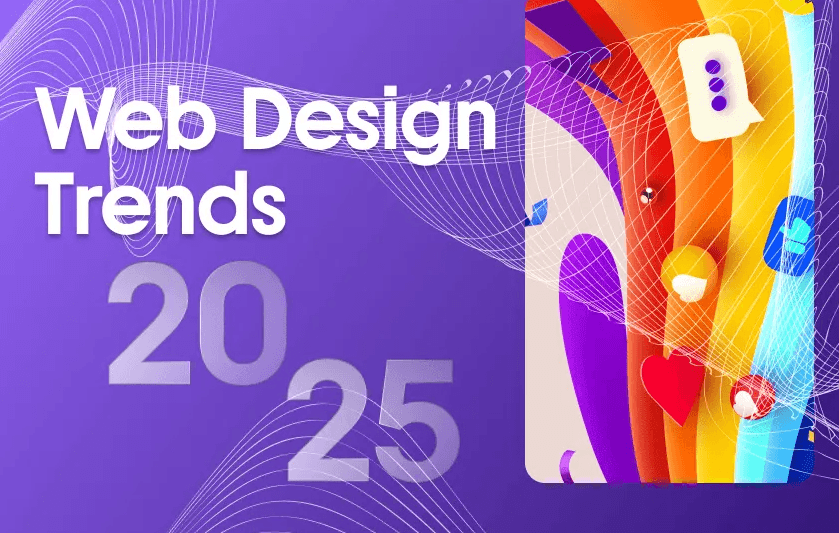Let’s be real—2025 is shaking up everything we thought we knew about web design. From AI-driven layouts to immersive user experiences, website design trends 2025 are redefining how we build for the web. Whether you’re planning a redesign or starting fresh, it’s important to follow the updated rules of designing a website in 2025—where speed, personalization, and purpose rule the game.
In this blog, we’ll take a fun and helpful deep dive into everything you need to know to keep your site ahead of the curve.
1. Start With Purpose-Driven Design
Design is no longer just visual. In 2025, every pixel needs a purpose. Users expect instant clarity when they land on a page. Whether it’s buying, subscribing, or learning—design should guide them seamlessly.
Tips:
-
Define clear goals for each page.
-
Use visual hierarchy to guide attention.
-
Reduce clutter—every extra element should justify its existence.
Real-world example: Dropbox’s homepage is minimal yet purposeful, clearly guiding visitors to sign in or learn more.
2. Embrace AI-Powered Personalization
AI is no longer futuristic—it’s foundational. In 2025, websites will automatically adapt to user behavior, preferences, and location.
Think of:
-
Dynamic content blocks based on past visits
-
Personalized product recommendations
-
Chatbots that remember conversations
Tools to explore:
Hot tip: Use analytics to understand what sections users linger on, and adjust your design accordingly.
3. Mobile-First is Now “Mobile-Only” (Almost)
With over 60% of global traffic coming from mobile devices, designing for desktop first just doesn’t make sense anymore. Your mobile site should be fast, intuitive, and beautiful.
In 2025, this means:
-
Prioritizing thumb-friendly interactions
-
Using responsive typography
-
Cutting unnecessary hover effects (they don’t work on mobile!)
Google’s Mobile-Friendly Test tool is still a handy checkpoint. Try it out here: Mobile-Friendly Test.
4. Inclusive and Accessible Design Is Non-Negotiable
Design in 2025 must be inclusive by default. Accessibility doesn’t just benefit users with disabilities—it enhances UX for everyone.

Key rules to follow:
-
Use sufficient color contrast (check out WebAIM’s Contrast Checker)
-
Add alt text to all images
-
Ensure keyboard navigation works flawlessly
Besides being a moral and ethical responsibility, accessibility is now heavily tied to SEO and user retention.
5. Immersive Yet Lightweight Experiences
We all love cool animations, videos, and transitions—but they shouldn’t slow down your website. In 2025, the name of the game is immersive, but optimized.
How to strike that balance:
-
Use micro-interactions to add delight without delay
-
Rely on SVGs and Lottie animations for lighter load times
-
Compress everything (images, video, code)
Webflow, for instance, shows how to keep things slick without compromising speed: Webflow Showcase.
6. Voice and Visual Search Optimization
With the rise of smart assistants and visual recognition tech, users now expect to speak or snap instead of type. Your website should be ready.
Action steps:
-
Structure content with voice search in mind (use FAQs and conversational tone)
-
Add schema markup for better indexing
-
Optimize images with descriptive file names and alt tags
Voice search is especially relevant for eCommerce and service-based sites—don’t miss this trend.
7. Sustainability and Eco-Conscious Design
Yes, even websites leave a carbon footprint. In 2025, more users care about how eco-friendly your digital presence is.
Ways to go green:
-
Choose sustainable hosting providers (like GreenGeeks)
-
Use efficient code and compress assets
-
Avoid autoplay videos and heavy background scripts
Adding a “green badge” to your site can even boost trust among eco-conscious users.
8. Authentic Brand Storytelling
People crave realness. Ditch the stock photos and corporate jargon—2025 is all about human-first design and storytelling.
Ideas:
-
Show real employee photos, behind-the-scenes shots
-
Use conversational language and local flavor
-
Share customer testimonials as interactive stories
Your design should make users feel your brand—this emotional connection is what drives conversions.
9. Modular and Scalable Design Systems
As companies grow, so do their websites. A smart 2025 design uses modular components that can scale easily across teams and devices.
This means:
-
Creating reusable UI elements
-
Designing with atomic principles
-
Using tools like Figma, Storybook, or Zeroheight to manage your design system
This approach saves time, ensures consistency, and empowers both developers and designers.
10. Cybersecurity-Centered Design
Users are more privacy-conscious than ever. Websites in 2025 must be designed with security in mind.
What to include:
-
HTTPS, always
-
Simple but strong password UX (think: passkeys and 2FA)
-
Clear cookie consent and privacy settings
A trustworthy design builds long-term loyalty.
Designing a website in 2025 isn’t about following rules blindly—it’s about understanding your audience, using the best tools available, and creating something that works and wows.
Remember, website design trends 2025 are here to guide you, not restrict you. Stay flexible, keep testing, and most importantly, stay human.
Designing a website in 2025 isn’t about following rules blindly—it’s about understanding your audience, using the best tools available, and creating something that works and wows.
Remember, website design trends 2025 are here to guide you, not restrict you. Stay flexible, keep testing, and most importantly, stay human.
Conclusion:
Need Help Bringing Your Website Vision to Life?
Hey there! 😊 If you’re ready to build or revamp your website and need a hand with designers, developers, or project managers—we’ve got your back.
At Yoocollab, we offer reliable outstaffing and outsourcing services that connect you with the right tech professionals. Whether you’re a startup, an agency, or a growing business—we make scaling your digital team feel effortless and fun.
Just drop us a line—we’d love to hear from you!

